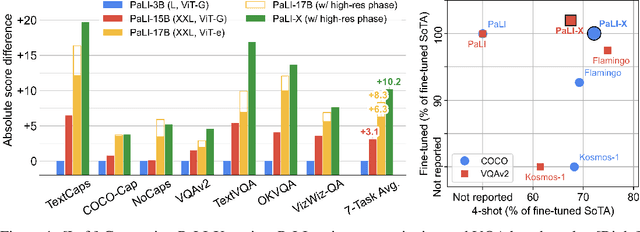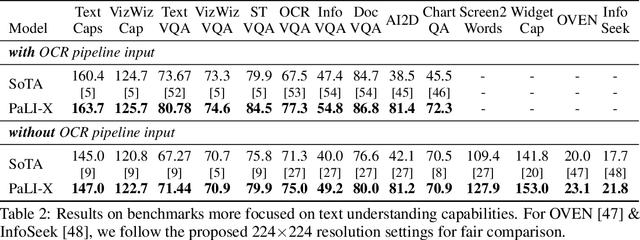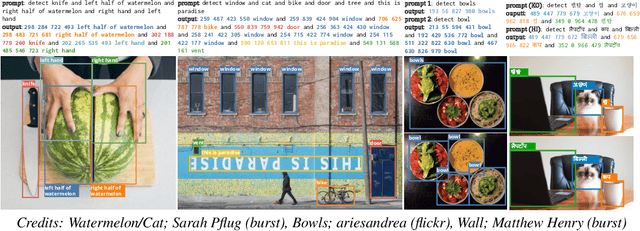Andreas Peter Steiner
No Filter: Cultural and Socioeconomic Diversityin Contrastive Vision-Language Models
May 22, 2024Abstract:We study cultural and socioeconomic diversity in contrastive vision-language models (VLMs). Using a broad range of benchmark datasets and evaluation metrics, we bring to attention several important findings. First, the common filtering of training data to English image-text pairs disadvantages communities of lower socioeconomic status and negatively impacts cultural understanding. Notably, this performance gap is not captured by -- and even at odds with -- the currently popular evaluation metrics derived from the Western-centric ImageNet and COCO datasets. Second, pretraining with global, unfiltered data before fine-tuning on English content can improve cultural understanding without sacrificing performance on said popular benchmarks. Third, we introduce the task of geo-localization as a novel evaluation metric to assess cultural diversity in VLMs. Our work underscores the value of using diverse data to create more inclusive multimodal systems and lays the groundwork for developing VLMs that better represent global perspectives.
PaLI-X: On Scaling up a Multilingual Vision and Language Model
May 29, 2023



Abstract:We present the training recipe and results of scaling up PaLI-X, a multilingual vision and language model, both in terms of size of the components and the breadth of its training task mixture. Our model achieves new levels of performance on a wide-range of varied and complex tasks, including multiple image-based captioning and question-answering tasks, image-based document understanding and few-shot (in-context) learning, as well as object detection, video question answering, and video captioning. PaLI-X advances the state-of-the-art on most vision-and-language benchmarks considered (25+ of them). Finally, we observe emerging capabilities, such as complex counting and multilingual object detection, tasks that are not explicitly in the training mix.
 Add to Chrome
Add to Chrome Add to Firefox
Add to Firefox Add to Edge
Add to Edge